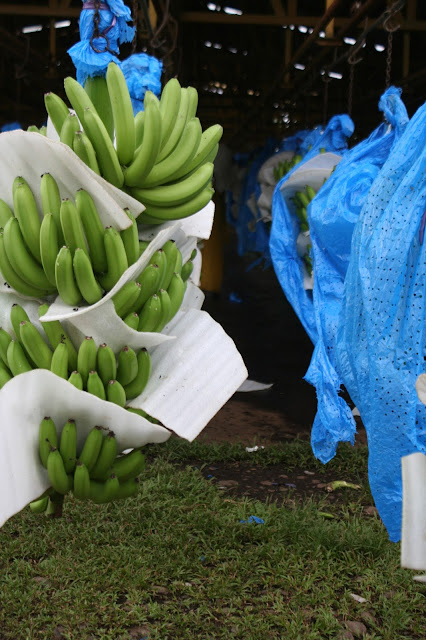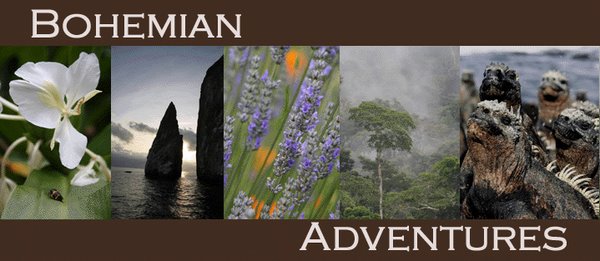 |
| Earth University's sustainable banana farm - block 2 - which we visited on our second day in Costa Rica. Finca means farm, so Finca Bananera Earth means "Earth Banana Farm." All photos Copyright (c) 2013 Wendee Nicole On day 2, Heidi and I visited Earth University, which I'd previously visited in Oct 2011 for the Planet, People, Peace (P3) conference (there are some other really cool images from that visit here). The next P3 conference is coming up in Nov, and I'm considering attending again! It was really cool. Anyway, this was a trip to report on agritourism and sustainable agriculture practices, as well as ecotourism and Costa Rica's efforts to become the first - or one of the first - carbon-neutral nations in the world. Imagine the US government having an official policy of trying to become carbon-neutral? Even if Costa Rica doesn't achieve neutrality by the deadline - and there are rumors already of the date being pushed back - it is a commendable thing in itself that they have the goal. And they are certainly making efforts. I will be writing about it for Earth Island Journal and possibly another publication. Below are some images, and a video, from the banana farm visit. Earth University is a fascinating place, and they are a carbon-neutral operation. |
 |
| This is Michelle Medina, New Business Developer for Earth University product division. The banana plantation is actually a for-profit venture, whereas the university itself is nonprofit. However, 100% of the funds raised go into scholarships for Earth U students. They have shown that sustainability can be profitable. Some of the bananas go to Whole Foods in the US. |
 |
| The bags protect the bananas from pesticides. The banana plantation is not organic, but they employ various techniques to reduce the use of chemicals and other problems associated with traditional farms. Inside the bags they put chile pepper and garlic to repel insects, rather than chemicals. The plantation is still sprayed with fungicides to repel an otherwise devastating fungus called sigatoka. They spray by airplane - using GPS to make sure it is only sprayed on the plantation - 3 of 4 weeks, and during the other week, the plantation is sprayed with beneficial organisms. By using these beneficial microorganisms, they have been able to reduce chemical use by 30%. There are also fears of a new strain of Panama disease, a former version of which wiped out banana crops in the 1980s. Because all of the bananas are clones of one another and hence genetically identical, they are particularly susceptible to epidemics... |
 |
| The banana man leads the "banana train." In other plantations, workers carry or drag all the banana bunches! Earth U created this trolley system to improve worker conditions. |
 |
| Another view of the "banana train." |
Heidi and I with our sexy hair nets!
 |
| The foam inserts are removed and the blue plastic is removed and recycled. They make plastic terra cotta roof tiles from the banana bags that are used all over Costa Rica. |
 |
| Bananas! |
 |
| Once bananas come off the banana train, they get washed and then placed on the conveyer belt, where workers put them in boxes. |
 |
| The ones on the left go to local (Costa Rica) markets, while the ones on the right go to Europe. |
 |
| These bananas - the best quality - are shipped to Whole Foods markets in the U.S. |
 |
| A yummy cafe mocha from Earth University's Aroma coffee shop, made with Earth University coop coffee (CoopeDota carbon-neutral coffee).
|










2 comments:
I love that they make roof tiles from the banana bags!
Yea that is cool isnt it!
Post a Comment